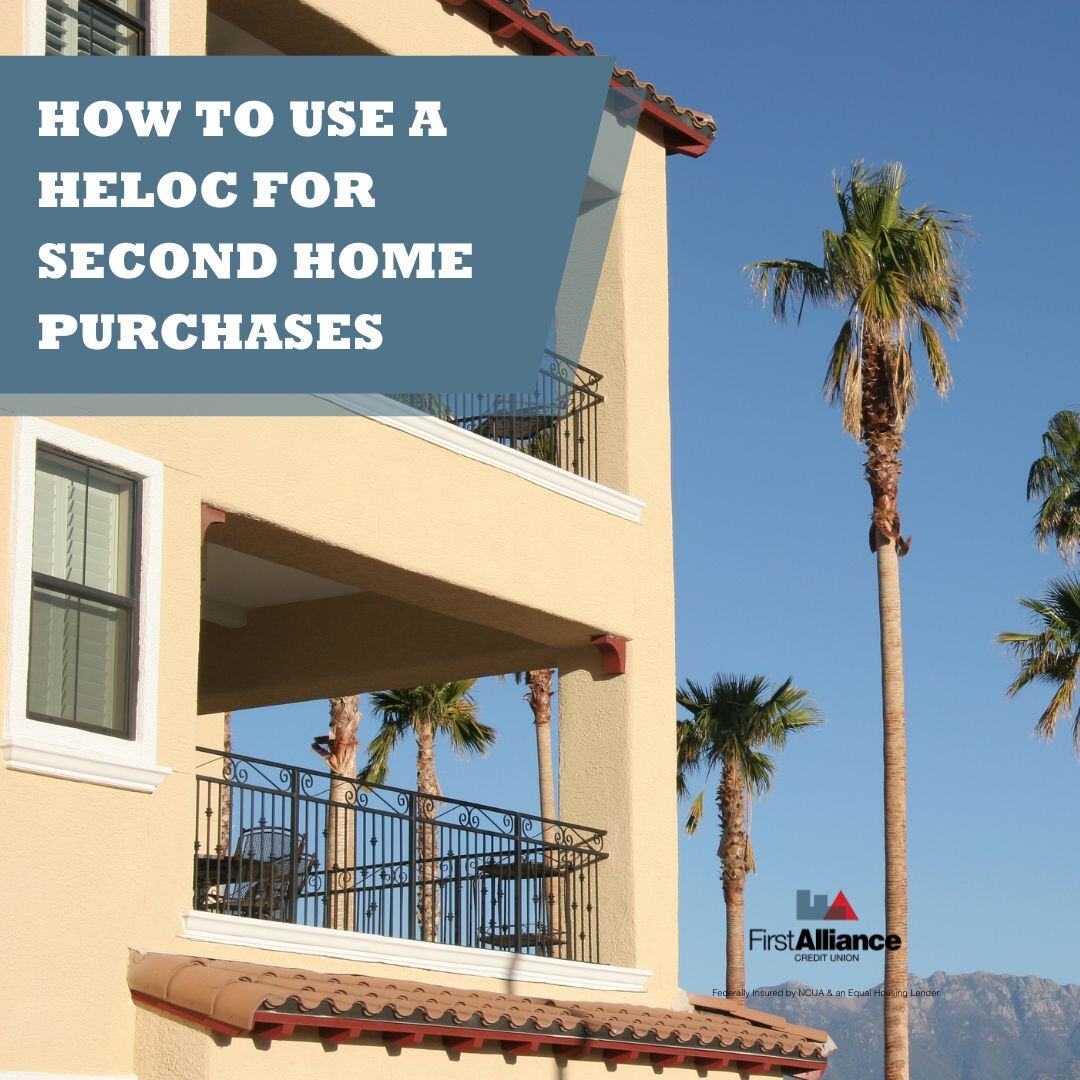How to Use Credit Cards Wisely
Credit cards tend to have a bad reputation for getting people in trouble, but in many cases, it isn’t the cards themselves that are the problem. It’s...

For many young adults, the idea of buying a second home or investing in property is a good idea but might seem out of reach. However, a Home Equity Line of Credit (HELOC) can make this goal more achievable. In this guide, we'll explore what a HELOC is, how it works, and smart ways to use it for investment properties.
A Home Equity Line of Credit (HELOC) allows you to borrow money against the equity you've built in your home. Here's a simple breakdown:
Revolving Line of Credit: Similar to a credit card, but your home serves as collateral.
Credit Limit: You get a set credit limit based on a percentage of your home's appraised value, minus any outstanding mortgage balance.
Draw Period: During this period (usually 5-10 years), you can borrow, repay, and borrow again.
Repayment Period: After the draw period (lasting 10-20 years), you repay the borrowed amount plus interest.
Example: If your real estate is valued at $200,000 and you owe $120,000 on your mortgage, you have $80,000 in available equity. A lender might allow you to borrow up to 85% of that equity, giving you a HELOC limit of around $68,000.
Using a HELOC to buy a second home is a common strategy. You can use the funds as a down payment or even to purchase the property outright if the amount is sufficient. This approach is particularly useful for investment properties or vacation homes.
Assess Your Equity: Determine how much equity you have in your current home. The more equity you have, the higher your potential HELOC limit.
Apply for a HELOC: Contact lenders to understand their terms and apply for a HELOC. Ensure your credit score is good and you have all necessary documentation, such as proof of income and a recent home appraisal.
Plan Your Purchase: Identify the second home you want to buy. This could be an investment property, a vacation home, or even a rental property to generate additional income.
Calculate Your Down Payment: Use your HELOC to cover the down payment. Most lenders require a down payment of 20-25% for investment properties.
Finance Renovations: If the second home needs repairs or upgrades, you can use additional HELOC funds to cover these costs.
Close the Deal: Once your HELOC is approved and you’ve planned your purchase, use the funds to finalize the purchase of your second home.
Example: Suppose you find a rental property costing $150,000. With a $60,000 HELOC limit, you could use $30,000 for a 20% down payment and the rest for initial renovation costs, making the purchase easier and more affordable.

Leverage Existing Equity: Instead of saving for years, you can use the equity in your current home to invest in a second property.
Potential Income Generation: If you buy a rental property, the rental income can help cover the HELOC payments.
Flexibility in Funding: A HELOC offers flexibility in how and when you use the funds, which can be advantageous for managing purchase and renovation costs.
Using a HELOC to finance a second home comes with both advantages and potential drawbacks. Understanding these can help you make an informed decision about whether this financial strategy suits your needs. Here are some of the key benefits and risks associated with using a HELOC for a second home.
Flexibility: Borrow money as needed, up to your limit.
Great Payment Options: Choose to pay only the interest initially, delaying principal payments.
Tax Benefit: Interest on HELOC debt may be tax-deductible (consult a tax expert to confirm eligibility).
Improved Credit Report: Timely payments can enhance your credit score.
Lower Fees: HELOCs often have lower closing costs compared to other loans.
Lower Interest Rates: Generally lower than credit cards and personal loans.
Adjustable Interest Rate: Variable rates can increase, raising your payments.
Uncapped Variability: No limit on how high the interest rate can go.
Budget Instability: Fluctuating payments can disrupt your budget.
Difficult to Manage: Interest-only repayments can lead to larger financial challenges later.
Higher Repayments: Extending the repayment period can increase total repayment amounts.
Unpredictability: Variable rates mean payments can rise unexpectedly.
Risk of Foreclosure: Failure to make payments can result in losing your home.
Debt Accumulation: Overborrowing can lead to significant debt.
Apply for a HELOC involves meeting certain financial and credit criteria. Lenders will evaluate your credit score, home equity, and income stability. Ensuring you have the necessary documentation and good credit history can improve your chances of approval.
Good Credit Score: Typically 620 or higher.
Sufficient Home Equity: Usually at least 15-20% of your home's value.
Proof of Income: Pay stubs, tax returns, and possibly bank statements.
Low Debt-to-Income Ratio: Generally below 43%.
Home Appraisal: Determines your home's current market value.
If you have a steady job earning $50,000 annually and your home’s value has increased since you bought it, you might be a good candidate for a HELOC.
Most HELOCs have variable interest rates, meaning your payments can change over time. The rate is often based on a benchmark like the prime rate plus a margin set by the lender.
Borrowed Amount: $10,000
Interest Rate: 4%
Monthly Interest Payment: $10,000 x 0.04 / 12 = $33.33
During the draw period, you might only need to pay interest on what you’ve borrowed. Once the repayment period starts, you'll pay both interest and principal, increasing your monthly payments.
Home equity lines of credit typically involve variable rather than fixed interest rates. Here are key points about variable rates:
Index-Based Rates: Based on a publicly available index (e.g., prime rate).
Rate Adjustments: Interest rate changes with the index value.
Margin: Lenders add a "margin" (e.g., 2 percentage points) to the index rate.
Historical Rates: Research the index’s historical changes.
Introductory Rates: Some lenders offer low initial rates for a short period.
Rate Caps: Legally required to have a maximum interest rate cap.
Payment Adjustments: Some plans limit how much your payment can increase.
Some lenders allow converting from a variable to a fixed rate or let you convert part of your line to a fixed-term loan.
A HELOC offers various ways to enhance your financial situation. From debt consolidation to home improvement, leveraging your home equity can provide flexible funding options. Let's explore some smart strategies for utilizing your HELOC effectively.

Use your HELOC to pay off credit cards or personal loans with higher interest rates, potentially saving you money on interest.
If you have $5,000 in credit card debt at 18% interest, using your HELOC with a 5% rate to pay it off could save you significant interest.
Fund renovations that increase your home’s value, like updating a kitchen or adding a bathroom.
Spending $20,000 on a kitchen remodel could add significant value to your home, making it a smart investment.
Cover down payments or initial costs of rental properties. This can generate additional income and build your investment portfolio.
Using a $30,000 HELOC to purchase a rental property that brings in $1,000 a month in rent could be a savvy financial move.
Keep a portion of your HELOC available for unexpected expenses, such as medical bills or urgent home repairs.
If your water heater breaks down, having quick access to funds can be a lifesaver.
A HELOC can be a powerful financial tool when used wisely. It offers flexibility and potential cost savings but comes with risks that need careful management. Understanding how a HELOC works and planning its use carefully can help you achieve your financial goals, whether buying a second home, investing in rental property, or making valuable home renovations. If your looking for financial guidance for this type of venture we have experts at First Alliance Credit Union that can help make this financial goal a reality.

Credit cards tend to have a bad reputation for getting people in trouble, but in many cases, it isn’t the cards themselves that are the problem. It’s...

Managing a credit card can feel like walking a tightrope. On one side, there’s the convenience of using credit to handle purchases, while on the...

Credit cards are a big responsibility. If you are thinking about getting a credit card, make sure it's the right one for you. While credit cards can...